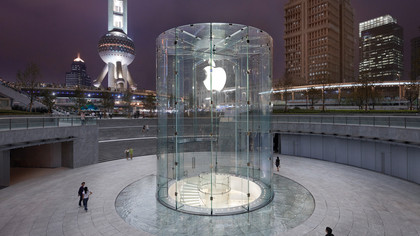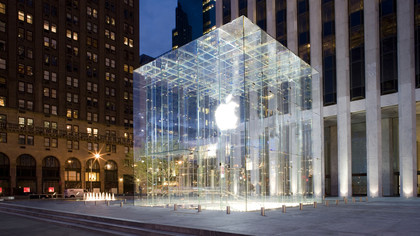Did Apple Stores save Apple?
Between them the Apple Store vision was already taking shape. It would have just one door so that customers intuitively grasped the layout as they entered; it would be elegant, spacious, and offer comfortable places to try out the company's products; and its salespeople would be on hand to offer the best advice – not the advice that earns them the most commission.
Finally, Johnson expressed his belief that the store should be the most powerful expression of the brand, and Jobs knew he had found his man.
Economy of unease

Convincing Apple's directors of the idea was Jobs' bigger challenge. Gateway had just closed 40 of its stores, and Apple's own sales had plummeted 29% the previous year. Against this climate, the board was in no mood for a high-street venture.
"I'm scratching my head and thinking this is crazy," recalled Art Levison, CEO of Genentech, who joined the Apple board in 2000. "We're a small company, a marginal player. I said that I'm not sure I can support something like this."
Apple's Chairman Ed Woolard shared Levison's concerns, and Jobs was immediately facing a backlash. Fortunately, however, one of his cannier board appointments was about to prove his worth. Mickey Drexler told him not to worry and to go ahead, build a store – not in a shopping mall, but in an empty Cupertino warehouse. Give it the full treatment, and hang out there until you feel comfortable, he said. Just keep it secret.
So Jobs and Johnson went to work. The prototype store was constructed in a vacant rented lot, where brainstorming sessions were conducted every week for six months. There Johnson came up with the concept of a 'genius bar', a sort of mix between a concierge desk and a drinks bar, after remembering his exceptional service experiences at Ritz-Carlton hotels.
Occasionally Drexler and some of Jobs' trusted friends would drop by and offer opinion and advice. With his hand in every decision and detail, right down to the streamlined, cashier-less checkout, Jobs' vision was becoming concrete.
Sign up for breaking news, reviews, opinion, top tech deals, and more.
Then Johnson threw him a curveball. With the store almost finished, it occurred to him that the layout was all wrong. The displays shouldn't be organised around Apple's product lines, but around what customers could do with them - make movies, create photo albums, burn CDs; in other words, solutions.
Jobs was apoplectic. "Do you know what a big change this is? I've worked my ass off on this store for six months, and now you want to change everything!" Eventually though, the CEO conceded. The store was reworked, and in 2001 Jobs revealed their prototype to the board.
Approval was unanimous. Everyone agreed it would take retailing and brand image to a new level, opening the path for Apple's image transformation from 'cult' to 'cool'.
Retail therapy

Against the newfound optimism, outsiders saw a high-street disaster waiting to happen. Apple's decision to set up 25 outlets in high-rent districts would mean having to rake in $12 million a year each, just to break even. Given that Gateway's shops could barely manage eight million a year, the numbers just didn't add up.
The impression was that Jobs' Bauhaus-inspired obsession with aesthetics resulted in beautiful products that had limited appeal outside the Apple faithful. The company's former CFO, Joseph Graziano, accused Apple of "serving caviar in a world content with cheese and crackers," while Channel Marketing analyst David Goldstein gave them "two years before they're turning out the lights on a very painful and expensive mistake."
But Jobs and Johnson were wise to take the long-view. Two years and 73 store openings later, Apple recorded $3 million in profit per store, per quarter, with 60,000 visitors per store. In 2004 Apple Retail brought in $1.2 billion, shattering an industry record for fastest billion-dollar milestone.